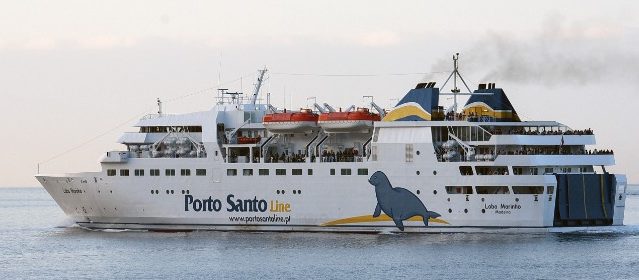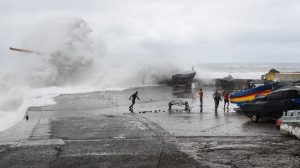After undergoing its annual service at the shipyards in Viana do Castelo, the Lobo Marinho (Porto Santo Ferry) arrived back in Madeira on schedule. The ship, which is now seen as more sustainable and comfortable, through the installation of new equipment and furniture, will resume its regular maritime connection between Funchal – Porto Santo – Funchal tomorrow, the 19th of February.
The servicing and additional upgrades represent a significant investment of 5.3 million euros. The company aims to ensure vessel safety and efficiency as well as create a modern, sustainable, and environmentally responsible ship.
New improvements include the adaptation of the ferry to allow in-shore electricity connection while moored. In addition, the ship has been adapted to use biofuels, making it the first ship in Portugal with these capacities. This transformation will allow a significant reduction in annual CO₂ emissions, estimated at more than 3,200 tons, thus contributing to the decarbonisation objectives of the maritime sector. The GSLines (Sousa Group), intends to carry out the use of state-of-the-art technologies on their whole fleet, allowing them to meet the so-called ecological navigation goals.
During its time in dry dock, the Lobo Marinho underwent an exhaustive overhaul, covering the structure, mechanical, and electrical systems, as well as improvements in propulsion to increase energy efficiency. Painting and hull maintenance was carried out, ensuring that the vessel continues to operate safely and durably: “It was a technically complex maintenance, in the sense that we had to do what we have to do every year and simultaneously with all the new interventions under the new national programme to support the merchant navy, it was very challenging,” stated Carlos Perdigão Santos, Director of the Porto Santo line.
Porto Santo Line, the company responsible for operating the ferry, ensured that all modifications were made in accordance with international maritime safety standards, allowing for a more reliable and sustainable passenger experience.
The modernisation process involved several technological innovations and structural improvements:
- Connection to shore power: The ship can now connect to the On-shore Power Supply medium voltage (6,600 volt) grid while berthed, eliminating the need to keep auxiliary diesel engines running. This significantly reduces CO₂ emissions and air pollutants.
- Preparing for the use of biofuels: Adapting to this type of alternative fuel will help decrease dependence on fossil fuels, aligning with the European Union’s environmental goals.
- Intelligent fuel consumption monitoring: A system based on artificial intelligence and cloud-based technology was implemented, which monitors the ship’s performance in real-time and optimizes consumption according to navigation conditions (wind, tides, and cargo transported).
- Application of silicone coating on the hull: This innovation reduces friction with the water, improving energy efficiency and thus reducing fuel consumption.
- Installation of variable frequency drives in the auxiliary electric motors, allowing for more efficient operation and a reduction in energy consumption.
The total value of the upgrades in energy efficiency and decarbonisation will amount to 3.6 million euros, supported by Porto Santo Line, with support from the RRP, under a national programme to support the decarbonisation of the merchant navy. In addition, the cost of the ship’s annual service has to be taken into account, creating a cost of approximately 5.3 million euros.
Samantha Gannon
info at madeira-weekly.com






